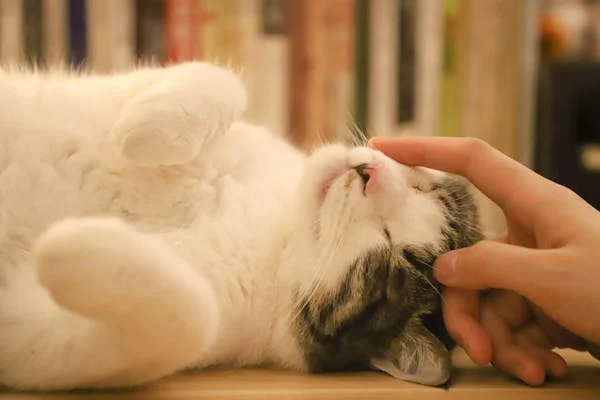Cats are known for their independent and sometimes secretive nature, which can make it difficult to spot when they aren’t feeling well. While some health issues may be obvious, many subtle signs could indicate that your feline friend is sick. As a responsible pet owner, recognizing the early symptoms can help prevent minor issues from becoming serious problems. Here’s what to watch for:
1. Changes in Appetite
One of the earliest signs of illness in a cat is a change in eating habits. If your cat is suddenly eating much more or less than usual, it could indicate a problem. Loss of appetite can be related to various conditions, from dental issues to digestive problems or infections. On the other hand, excessive hunger may be a sign of hyperthyroidism or diabetes. If your cat refuses to eat for more than 24 hours, it’s time to consult a vet.
2. Vomiting and Diarrhea
Occasional vomiting may not be cause for concern, especially if your cat coughs up hairballs. However, frequent or severe vomiting, especially accompanied by diarrhea, can be a red flag for gastrointestinal issues, infections, poisoning, or other serious conditions. Blood in vomit or stool is particularly concerning and requires immediate veterinary attention.
3. Lethargy and Lack of Activity
Cats are known for their love of sleep, but if your cat seems unusually tired, sluggish, or unwilling to play, it may be a sign of illness. Lethargy can be associated with infections, pain, or chronic diseases like kidney failure or diabetes. If your normally active cat is suddenly uninterested in their usual activities, it’s important to monitor them closely.
4. Weight Loss or Gain
Significant weight changes in cats can indicate underlying health problems. Rapid weight loss, especially in older cats, may signal kidney disease, diabetes, or cancer. Unexpected weight gain can also be a concern, as it may be linked to fluid retention from heart disease or liver issues. Regularly weighing your cat can help you detect subtle changes before they become more serious.
5. Changes in Grooming Habits
Cats are typically fastidious groomers, so a sudden change in grooming behavior can be a sign of trouble. If your cat stops grooming itself, it may be due to pain, arthritis, or dental problems that make grooming uncomfortable. Alternatively, over-grooming, which can lead to bald patches, could be a sign of stress, allergies, or skin conditions.
6. Respiratory Problems
Any changes in your cat’s breathing should be taken seriously. Labored breathing, wheezing, coughing, or frequent sneezing can indicate respiratory infections, asthma, or heart disease. If your cat is panting (something that’s rare in cats) or breathing rapidly, it’s crucial to seek veterinary care immediately, as this could signal a life-threatening condition.
7. Unusual Behavior or Aggression
If your cat becomes suddenly aggressive or irritable, it may be a sign that they are in pain or not feeling well. Cats that are normally friendly may hiss, swat, or hide when they don’t feel good. Conversely, a normally independent cat might become overly clingy and seek constant attention. Behavior changes like these are often an early indicator of illness.
8. Changes in Water Consumption
Monitoring your cat’s drinking habits is important, as both increased and decreased water intake can signal health problems. Excessive thirst may be a sign of diabetes, kidney disease, or thyroid problems. On the other hand, if your cat is drinking less than usual, it could be a sign of dehydration, especially if accompanied by lethargy or vomiting.
9. Difficulty Using the Litter Box
Changes in litter box habits can also indicate that something is wrong. Straining to urinate, frequent trips to the box, or urinating outside of the box can be symptoms of a urinary tract infection, bladder stones, or feline lower urinary tract disease (FLUTD). Similarly, constipation or diarrhea should never be ignored, especially if it persists for more than a day.
10. Physical Changes
Any noticeable physical changes, such as swelling, lumps, or changes in your cat’s coat, can also be warning signs. A dull or greasy coat can indicate poor health, and lumps or bumps should always be examined by a vet to rule out cancer or abscesses.
When to See a Vet
If you notice any of the above signs, it’s essential to consult your veterinarian as soon as possible. Early detection can make a significant difference in treatment outcomes and your cat’s overall health. Regular vet check-ups are also crucial in maintaining your cat’s well-being, as they can catch potential health issues before they become severe.
Conclusion
Cats are experts at hiding illness, but by paying attention to subtle changes in behavior, appetite, and physical condition, you can help catch problems early. If you’re ever in doubt about your cat’s health, it’s better to err on the side of caution and consult a veterinarian. Your attentiveness can make all the difference in keeping your cat happy, healthy, and by your side for years to come.
This guide offers a comprehensive list of symptoms to watch for, helping cat owners stay proactive about their pet’s health. Would you like to expand any section or add more detail?

